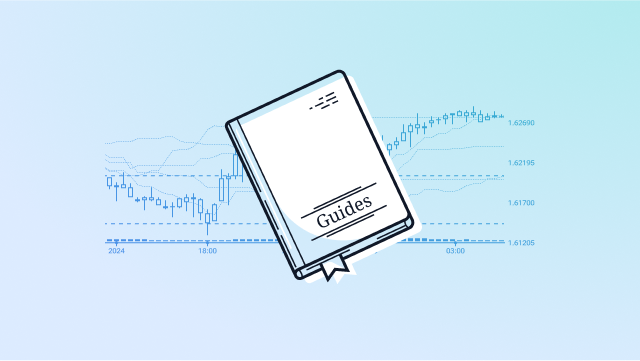Let’s trade like pros: catch Momentum, not the moment!
The developer of the first version of this indicator remained unknown, but the famous Martin Pring wrote a lot about this tool and shared his personal experience of using it (check the interview Technical Analysis for Short Term Traders − Martin Pring ).
Momentum has always been regarded as an excellent gauge of the market strength, and its results do not depend on the type of the trading asset.
In the Forex market, the advanced properties of the indicator are somewhat reduced, but the speculators have learned to compensate for this shortcoming with the additional methods. Strategies that use Momentum are always relevant.
So let’s begin.
Logic and purpose
The traditional Momentum oscillator determines pace of the market by comparing the current closing price with the closing price of several periods ago.
If the current closing prices are bigger than the previous prices, there is as an upward trend. If the current prices are lower than the previous ones for a selected time interval – there is a downward movement.
At the same time, an overbought/oversold status is evaluated when the curve reaches the maximum or minimum values. Reliability of the signals increases significantly when combined with moving averages.
Calculation procedure
The value of the Momentum indicator is defined as
PriceClose (i) is a closing price of the current bar;
PriceClose (i-n) is a closing price n bars ago.
This formula is indicated in J. Murphy’s book «Technical Analysis of the Futures Markets…» and is currently considered «correct», although there is a disagreement regarding the calculation of the Momentum formulas in the modern textbooks.
There is another calculation version specified in Steven B. Achelis’ book «Technical Analysis from A to Z», in which the Momentum value coincides with Rate of Change and represents the inverse formula:

Unfortunately, it was this formula that migrated to many automatic programs of technical analysis, so be careful.
The Chande Momentum Oscillator (CMO) formula is still used, although rarely:
MomentumSimple= PriceClose – PriceClose(-1);
This value is further analyzed:
if MomentumSimple >0,then M1= MomentumSimple,and M2=0;
if MomentumSimple < 0,then M2= -MomentumSimple,and M1=0;
The Momentum value fluctuates in the range [0; 100]. Adding a smoothed moving average to the indicator simplifies further interpretation of signals.
Parameters and control
The standard version of the Momentum indicator is included in the package of all popular trading platforms and represents a traditional oscillator line in an additional window under the price chart.
In addition to the color scheme settings, the calculation period and price type are also considered as basic parameters.
For all popular assets, the closing price is recommended. Experiments with other types of prices give stable results on the stock assets or exotic instruments − there is room for curious readers.
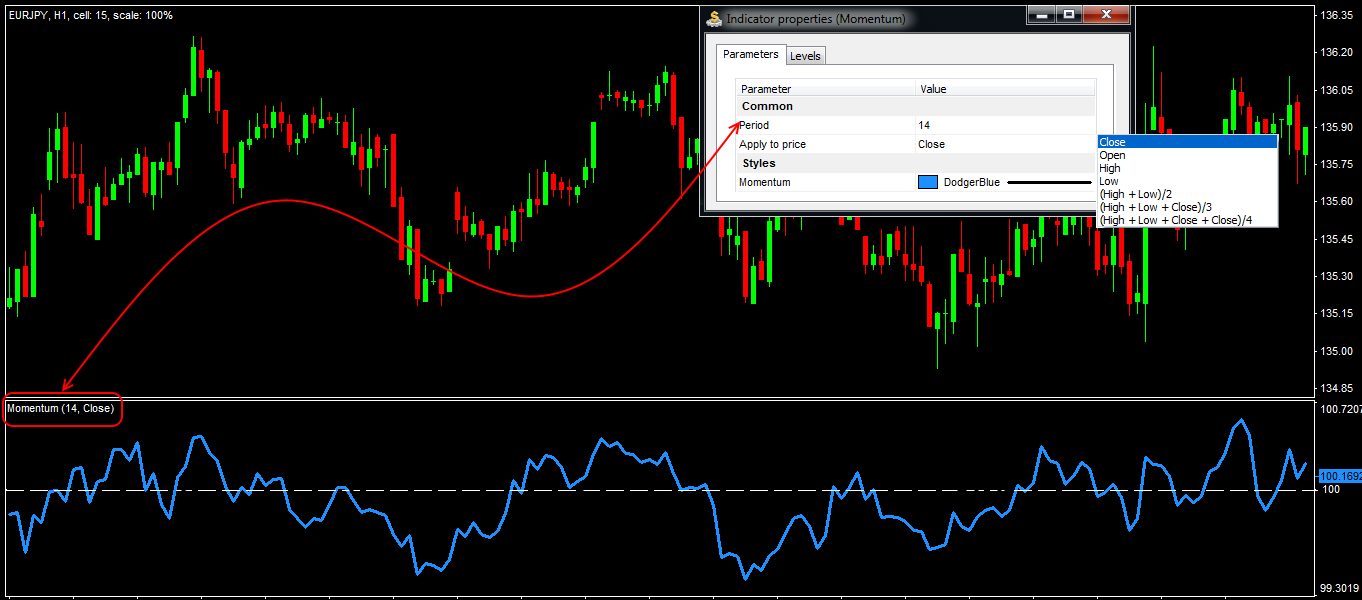
Standard version of the Momentum indicator
You can optimize the indicator’s parameters for your working timeframe by yourself. Recommendations for the calculation period are standard.
Setting a shorter period will make the Momentum indicator more sensitive, but it will also increase the number of false signals. The increase of the parameter «cuts off» most of fluctuations and identifies the main trend line.
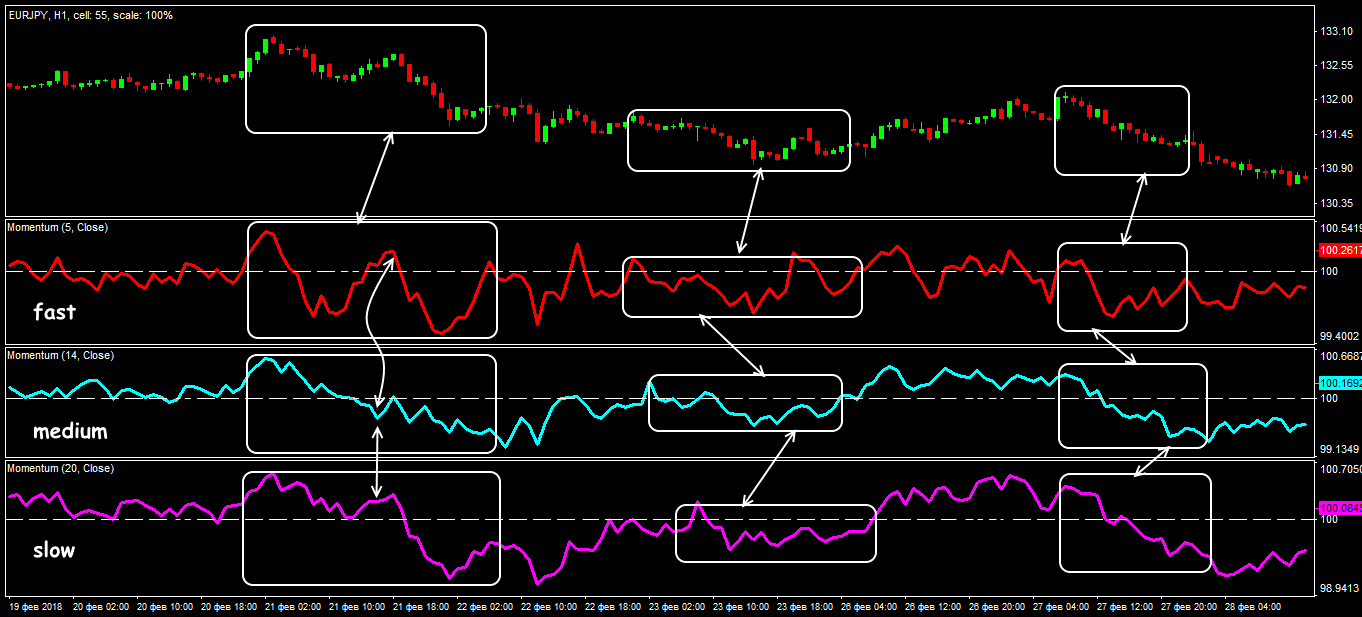
Long and short period in the Momentum indicator
The default value (14) is considered optimal for the periods of at least H1. For the small timeframes and for aggressive trading, the parameter can be reduced, then the signals will be more frequent, but less reliable.
For the convenience of analysis, you can use the multi-timeframe Momentum, for example, this option:
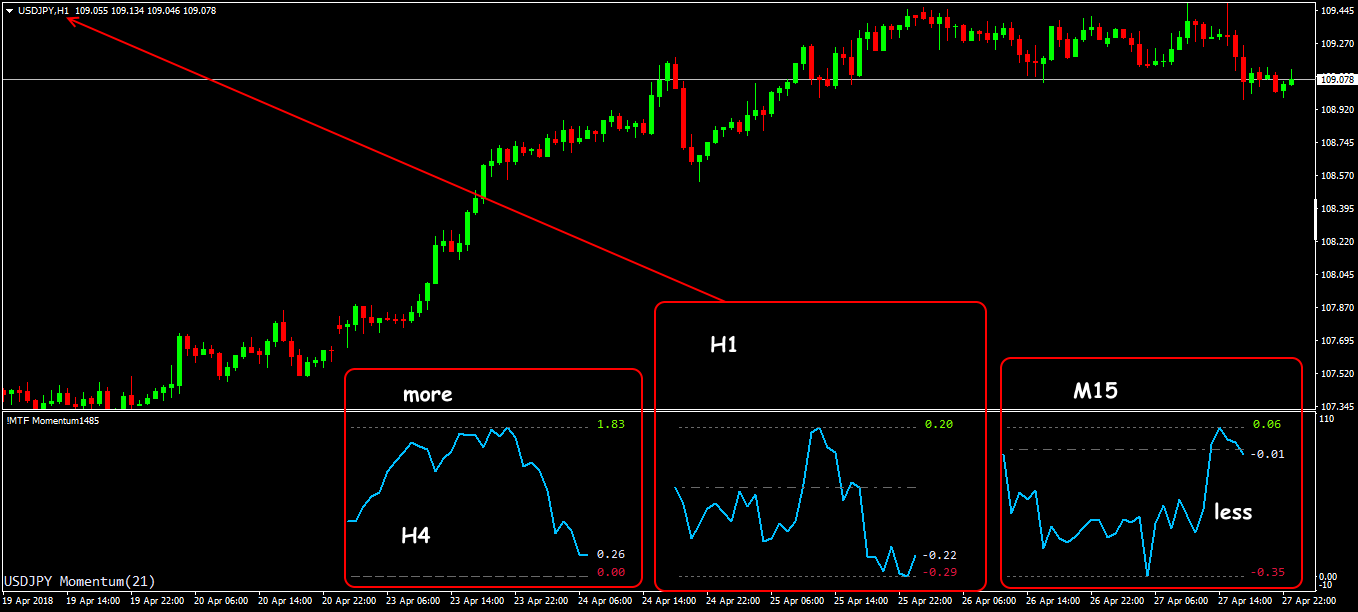
Multi-timeframe version of Momentum
In the Forex market, using the Momentum indicator for the small periods is not recommended at all!
Calculation of the Momentum indicator is too simple (even primitive), so any speculations reduce the reliability of its signals dramatically. In any case, the parameter should be selected depending on an older timeframe.
For example, if you trade and conduct analysis on the D1 timeframe, then it is recommended to use period 20-21 (1 month = 21 trading day), as it analyzes the trend for a trading month well.
So, what is the use of this indicator?
Let’s look at it in detail:
Trade signals of the indicator
First, let’s remember the simplest logic: Momentum is positive if the current price is higher, negative if it is lower, and is equal to zero if prices are the same.
The slope of the line connecting the critical points of indicator shows whether the market’s interest in the current direction is growing or falling.
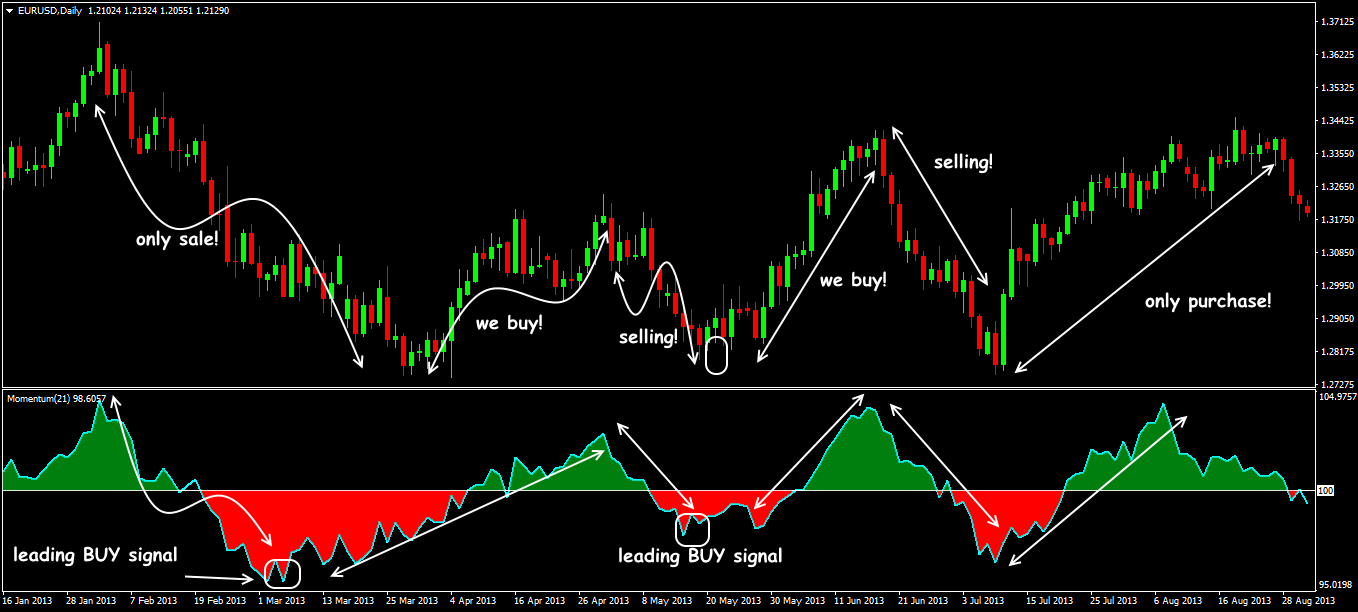
Momentum as an oscillator
For example, while the Momentum indicator continues to show the new max values, positions for purchase will be more secure; we can apply similar arguments to the minimum values of the Momentum indicator on the downtrend.
When the prices are rising and the Momentum indicator stops (or is falling), it warns you that the top is close and it is time to fix positions, or at least move Stop Loss closer to the current price.
The first trading scheme is based on using the Momentum indicator as a regular oscillator: a turn from the critical zone and a confident movement of the indicator line.
A signal to buy occurs if the Momentum forms a hollow and begins to grow, while a signal to sell − when it reaches a peak and turns down.
It is recommended not to close the position according to the Momentum signal − it is usually late!
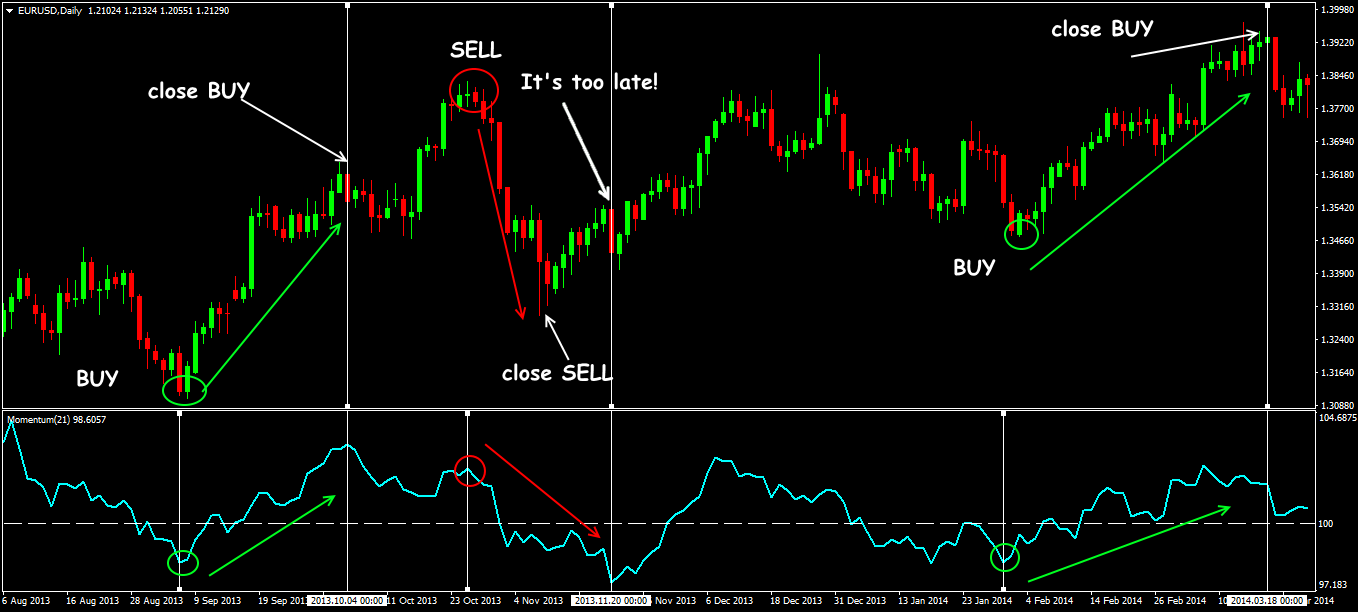
Trading signals of the Momentum indicator
The intersection of the middle line 100 can also be considered a trading signal: purchase − breakdown from bottom up, sale –from top to bottom.
The leading properties of the Momentum indicator are based on the fundamental market theory, according to which the market begins to «brake» before the turn and price movement in the current direction is slowing down.
It is the Momentum indicator that should be the first to see this situation.
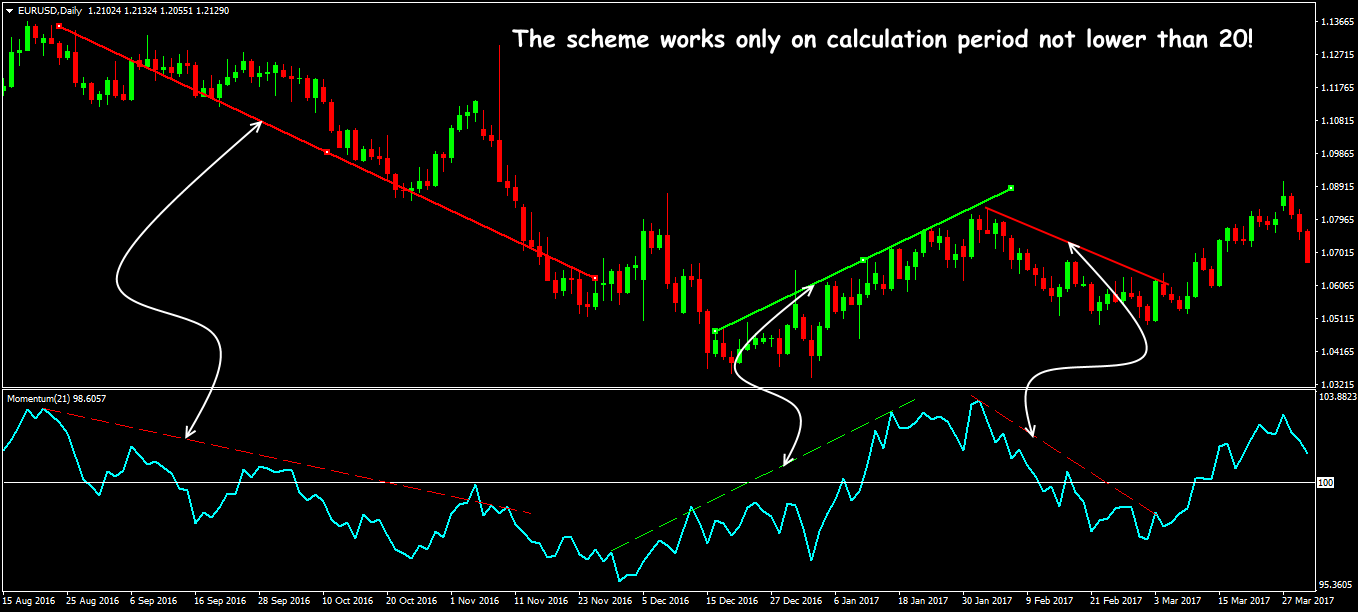
Momentum as a trend indicator
Most of the time, price moves in synchronism with the Momentum. Any problems will mean a disruption in the power balance between sellers and buyers (check Using Graphic Tools).
Classic situations of the Momentum line divergence with the price direction remain the strongest signal of a reversal.
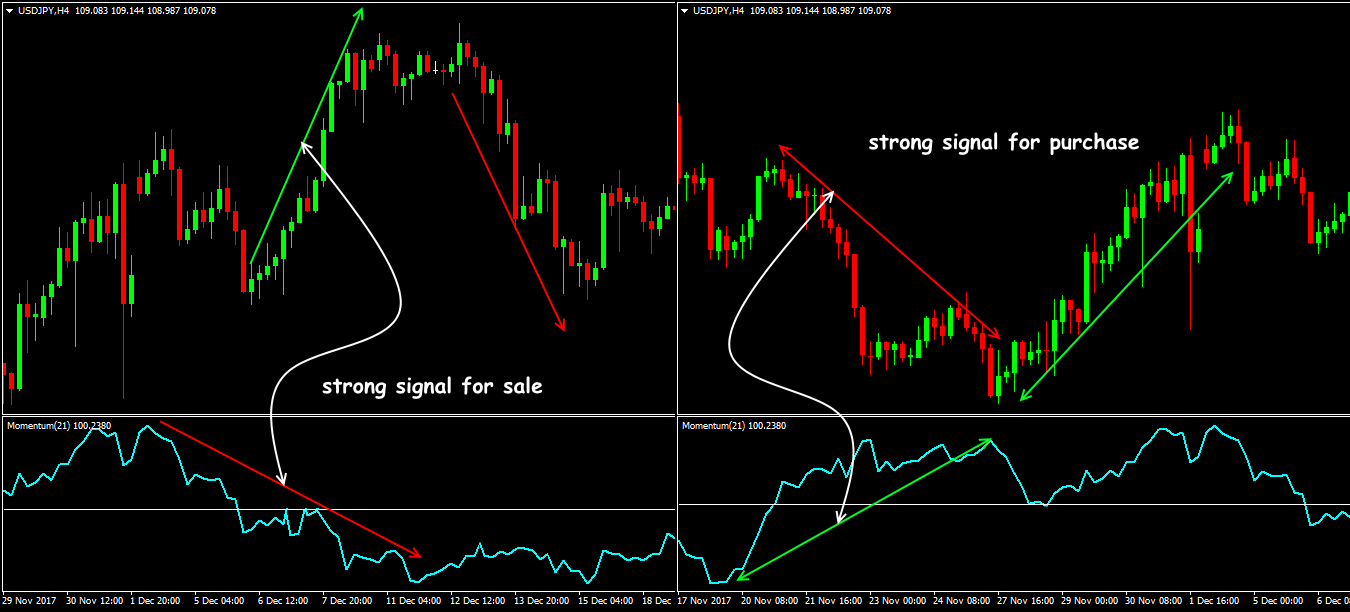
Trading schemes of divergence and flat for the Momentum
Application intrade strategy
Actually, this oscillator also allows you to trade from the overbought/oversold levels, but it has no clear boundaries of the critical zones – you will have to determine them by yourself.
Sometimes it will be useful to combine the Momentum with the Envelopes or Bollinger Bands indicator, then their dynamic lines will determine the levels we need (check Using Indicators).
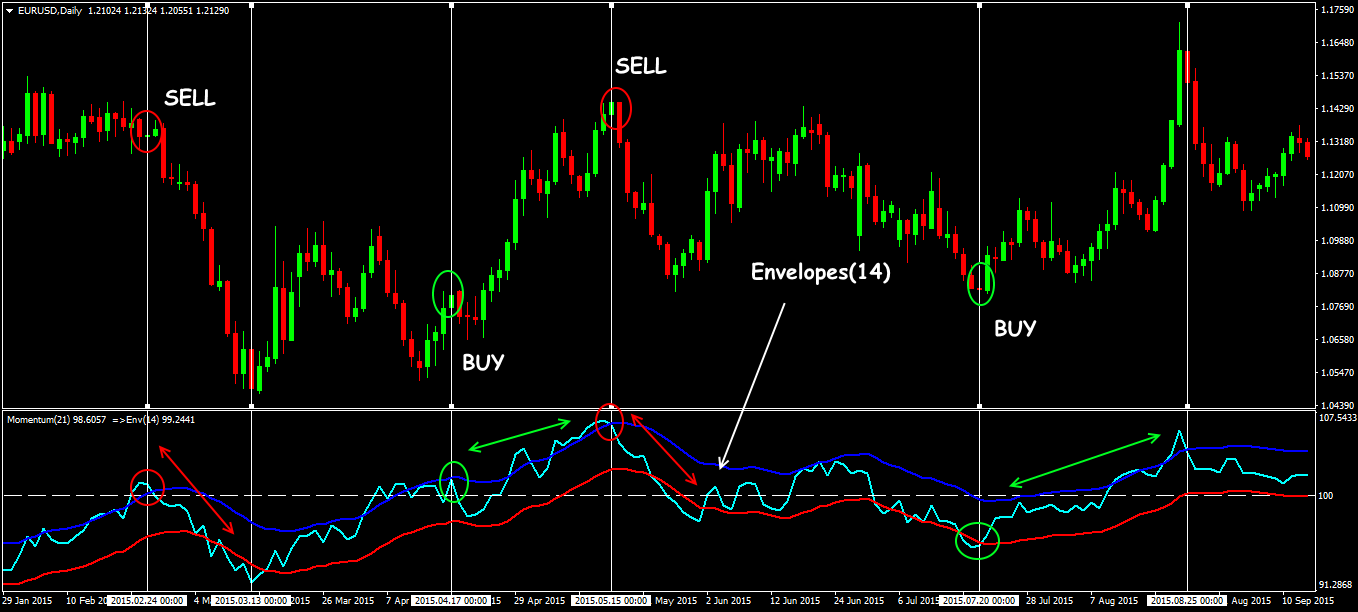
Example of using the modified Momentum indicator
We act in a traditional way with the channel indicators: a signal for purchase appears when the Momentum values come out of the critical sales area.
A signal for sale is generated similarly: when the Momentum indicator leaves the overbought zone.
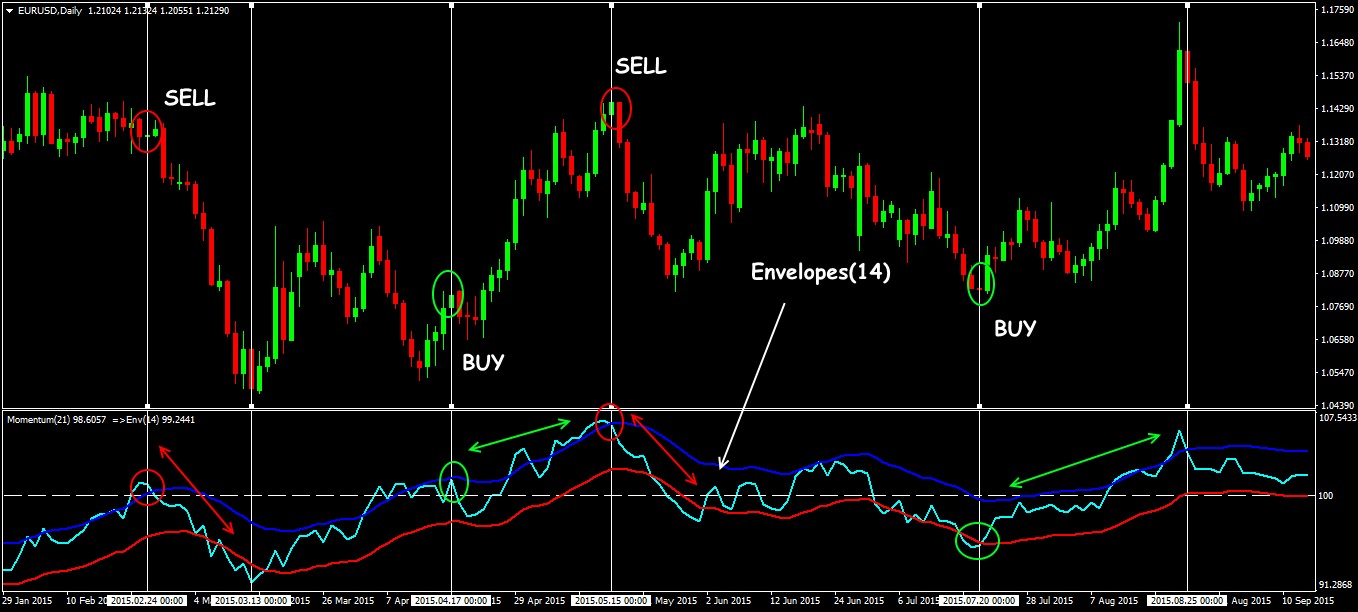
Example of using the Momentum with a channel indicator
You can trade using this scheme only in a wide flat. On a strong trend, this approach will bring many false signals.
The Elder’s Momentum strategy can be a good example of a reliable set with moving averages, as it uses only two indicators and shows stable results on a timeframe from H1 and higher.
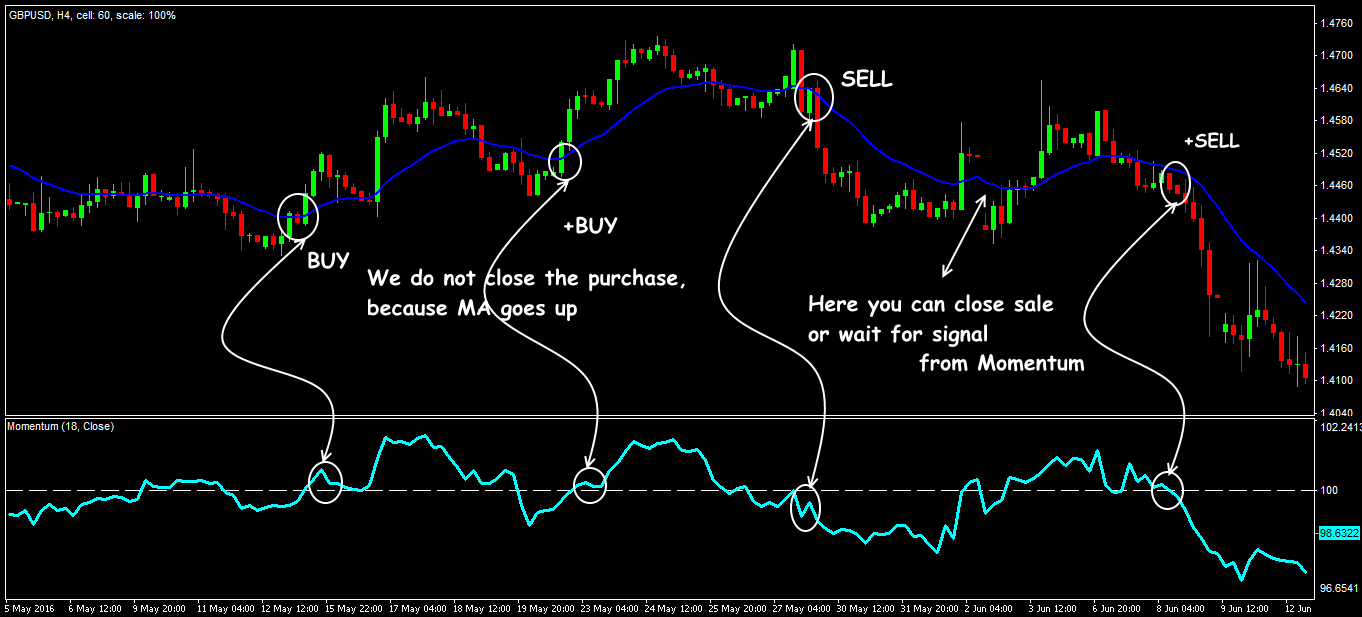
Example of using the Momentum with MA
Conditions for a purchase signal:
- Price breaks the moving average from bottom up;
- Most of the key bar’s «body» is above the EMA line;
- The Momentum is above level 100.
Conditions for a sale order:
- Price breaks the moving average from top to bottom;
- Most of the key bar’s «body» is below the EMA line;
- The Momentum is below level 100.
Several practical remarks
Like any oscillator, the Momentum gives an incorrect response to the speculative price swings, for example, during the news period or at the opening/closing of trading sessions.
What this means is that for high efficiency, the Momentum indicator must be carefully tested for the specific conditions: trading asset, volatility, period, influence of the fundamental factors.
The modern speculative market proves that the advanced features of the Momentum indicator are greatly exaggerated. It gives a lot of false signals on small periods.
It cannot be used for scalping (in any form). Moreover, it has no connection with the trading volumes (even the tick data is not taken into account!)
This indicator does not have parameters for offset and smoothing the result. Its calculation is only based on the historical data, so its forecasts only make sense for the long-term trading and only as part of an integrated trading system.
Was this article useful for you? It is important for us to know your opinion – share your comments down below!
 Sign Up to FTO Waitlist
Sign Up to FTO Waitlist



